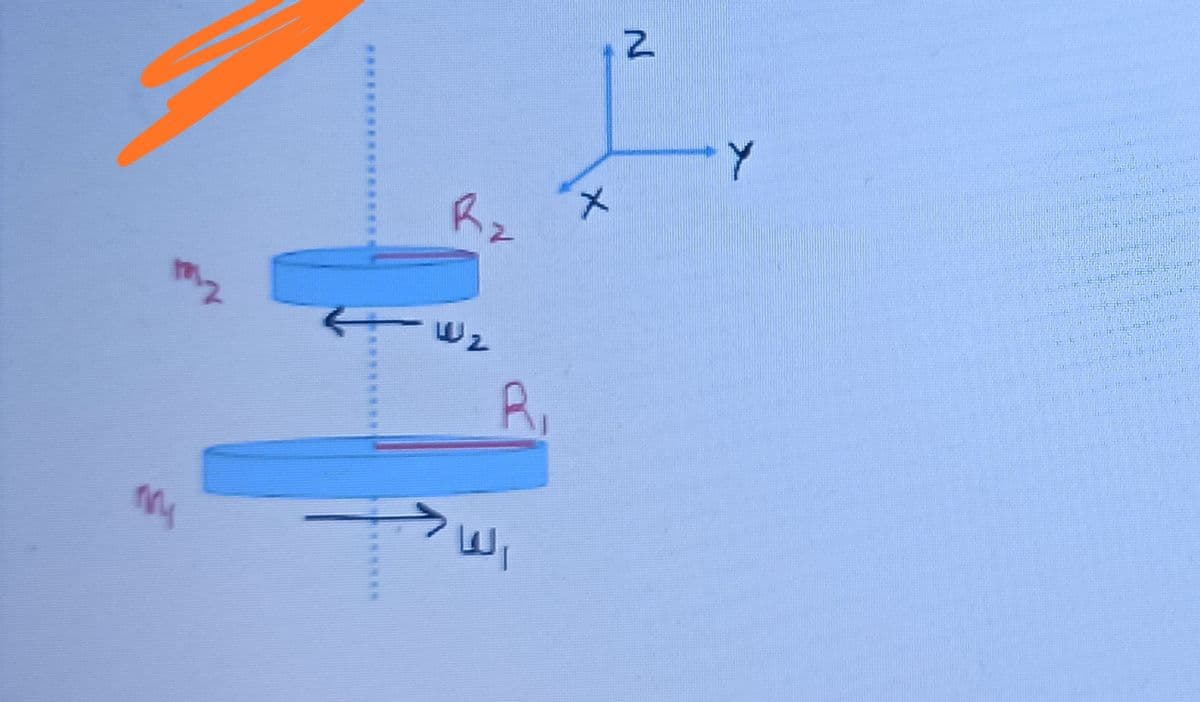Two solid disks with masses m; = 3m and m2= 2m are rotating freely without friction with angular velocities w;=w and w2= 2w, respectively about the same vertical axel passing through their centers of mass as shown (R,=2R and R2 =R ). As indicated w, and wzare in opposite directions. The upper disk is dropped down the axle to land on and couple with the lower disk (due to friction). The disks rub against each other and finally reach a common final angular velocity wr what is w and its direction ? [ for the solid disks assume IeM(1/2)MR21
Angular Momentum
The momentum of an object is given by multiplying its mass and velocity. Momentum is a property of any object that moves with mass. The only difference between angular momentum and linear momentum is that angular momentum deals with moving or spinning objects. A moving particle's linear momentum can be thought of as a measure of its linear motion. The force is proportional to the rate of change of linear momentum. Angular momentum is always directly proportional to mass. In rotational motion, the concept of angular momentum is often used. Since it is a conserved quantity—the total angular momentum of a closed system remains constant—it is a significant quantity in physics. To understand the concept of angular momentum first we need to understand a rigid body and its movement, a position vector that is used to specify the position of particles in space. A rigid body possesses motion it may be linear or rotational. Rotational motion plays important role in angular momentum.
Moment of a Force
The idea of moments is an important concept in physics. It arises from the fact that distance often plays an important part in the interaction of, or in determining the impact of forces on bodies. Moments are often described by their order [first, second, or higher order] based on the power to which the distance has to be raised to understand the phenomenon. Of particular note are the second-order moment of mass (Moment of Inertia) and moments of force.


Step by step
Solved in 3 steps with 3 images








